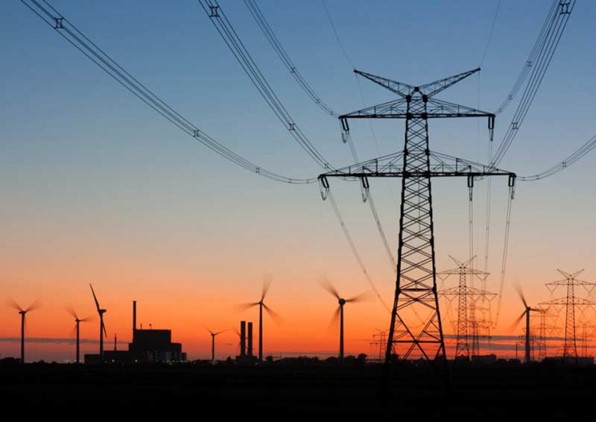
Detecting and Mitigating Anomalies with Your Energy Monitoring Solution
Energy monitoring solution (EMS) offer a window into your facility's energy consumption, revealing valuable insights through real-time and historical data. However, simply collecting data isn't enough. Identifying and understanding anomalies – deviations from typical patterns – is crucial for unlocking real savings and improved sustainability. Let's explore common anomalies and effective mitigation strategies:
1. Consumption Anomalies:
Anomaly: Sudden spikes or dips:
Causes: Equipment malfunction, sudden load changes, extreme weather.
Mitigation: Investigate: Analyze equipment logs, weather data, and production schedules to pinpoint the source. Implement controls: Install timers or automated shutoff for non-essential equipment during off-peak hours. Upgrade equipment: Consider replacing aging or inefficient equipment with energy-efficient models.
Anomaly: Unexplained trends:
Causes: Gradual inefficiencies, equipment degradation, behavioral changes.
Mitigation: Deep dive analysis: Compare consumption to historical data, analyze equipment efficiency trends, and identify areas for improvement. Targeted maintenance: Conduct preventive maintenance based on equipment performance data to address potential issues early. Promote awareness: Raise awareness about energy efficiency practices and encourage behavioral changes among occupants/operators.Anomaly: Peak demand deviations:
Causes: Inefficient scheduling, unnecessary equipment use, grid stability concerns.
Mitigation: Shift loads: Strategically schedule energy-intensive tasks outside peak hours. Demand response programs: Participate in programs that offer incentives for reducing demand during peak periods. Invest in on-site generation: Consider renewable energy sources to reduce reliance on the grid during peak times.
2. Equipment-Specific Anomalies:
Anomaly: High or low power factor:
Causes: Inefficient energy use, overloaded equipment, faulty components.
Mitigation: Install power factor correction capacitors: Improve power factor to near unity, reducing energy losses and potentially lowering electricity bills. Reduce load: If equipment is overloaded, identify and address the root cause, potentially by upgrading or adding equipment. Repair or replace: Fix faulty components promptly to improve efficiency and prevent further damage.
Anomaly: Increased current draw:
Causes: Overloaded equipment, inefficient operation, component failures.
Mitigation: Reduce load: Follow recommendations for appropriate load levels and identify potential bottlenecks. Optimize operation: Review operating procedures and consider adjustments for improved efficiency. Perform maintenance: Check equipment for wear and tear, conduct necessary repairs or replacements.
Anomaly: Abnormal vibration or temperature:
Causes: Imbalanced equipment, worn bearings, overheating components.
Mitigation: Schedule maintenance: Address potential issues before they lead to downtime or equipment failure. Monitor closely: Implement continuous monitoring to track trends and intervene promptly if anomalies persist. Balance equipment: Ensure proper equipment balancing to reduce vibration and wear.
3. System-Level Anomalies:
Anomaly: Harmonic distortion:
Causes: Non-linear loads, electronic equipment, power quality issues.
Mitigation: Install harmonic filters: Implement filters to suppress harmonics and improve power quality. Utilize harmonic-mitigating equipment: Choose equipment with built-in harmonic correction capabilities. Work with utility: Collaborate with your utility provider to identify and address potential grid-level harmonic sources.
Anomaly: Voltage fluctuations:
Causes: Grid instabilities, faulty connections, overloading.
Mitigation: Install voltage regulators: Stabilize voltage levels within acceptable ranges to protect equipment and ensure optimal performance. Upgrade infrastructure: Improve electrical infrastructure to handle potential overloading and surges. Work with utility: Report voltage fluctuations to your utility provider for investigation and potential corrective actions.
Anomaly: Grounding faults:
Causes: Faulty wiring, insulation breakdown, moisture intrusion.
Mitigation: Immediate action: Locate and address the fault source promptly to prevent safety hazards and equipment damage. Regular maintenance: Implement a preventive maintenance program to identify and address potential grounding issues early on. Grounding system review: Periodically review and upgrade your grounding system to ensure its effectiveness.
4. Behavioral Anomalies:
Anomaly: Unoccupied Periods with High Consumption:
Causes: Unnecessary equipment left running (computers, lights, printers) Plugged-in chargers even when devices are not in use Phantom loads from electronics in standby mode
Mitigation Strategies: Implement power strips with on/off switches: Encourage occupants to turn off power strips entirely when leaving their desks or work areas. Invest in smart power strips: These automatically cut power to devices in standby mode. Automate equipment shutdown: Utilize timers or motion sensors to automatically turn off lights, computers, and other equipment during non-working hours. Promote "unplug at the end of the day" culture: Encourage the practice of unplugging chargers and non-essential devices when not in use. Offer incentives: Implement reward programs for individuals or teams who demonstrate energy-saving behavior.
Anomaly: Increased Consumption During Non-Operational Hours:
Causes: Unauthorized activities outside regular working hours Inefficient cleaning practices (lights left on, equipment used unnecessarily) Security breaches (doors left open, HVAC systems operating improperly)
Mitigation Strategies: Implement access control systems: Restrict access to the facility outside operational hours through swipe cards, keypads, or other security measures. Install motion sensors and timers: Automate lighting and equipment operation based on occupancy detection, ensuring they are off when no one is present. Schedule cleaning activities strategically: Ensure cleaning happens during operational hours or utilize energy-efficient cleaning equipment. Conduct regular security audits: Identify and address any vulnerabilities in your security system that could lead to energy wastage. Monitor and analyze non-operational hour consumption: Track trends and identify specific areas of concern for targeted solutions.
Additional Tips:
Communicate openly: Inform occupants about the importance of energy conservation and the impact of their actions. Lead by example: Ensure management demonstrates commitment to energy-saving practices. Seek feedback: Engage occupants in identifying and addressing potential issues related to energy use during non-operational hours.Remember, continuous monitoring and adaptation are key to ensuring long-term success.
Recent Post

Tag Cloud
Scope of Energy Audit:
Identify areas of opportunity for energy saving and recommend the action plan to bring down total energy cost in the organisation.
Read MoreStay Updated!!!
Quick Links
Popular Links
Get In Touch
Bangalore, Karnataka
info@jouleye.com
99000 34002



